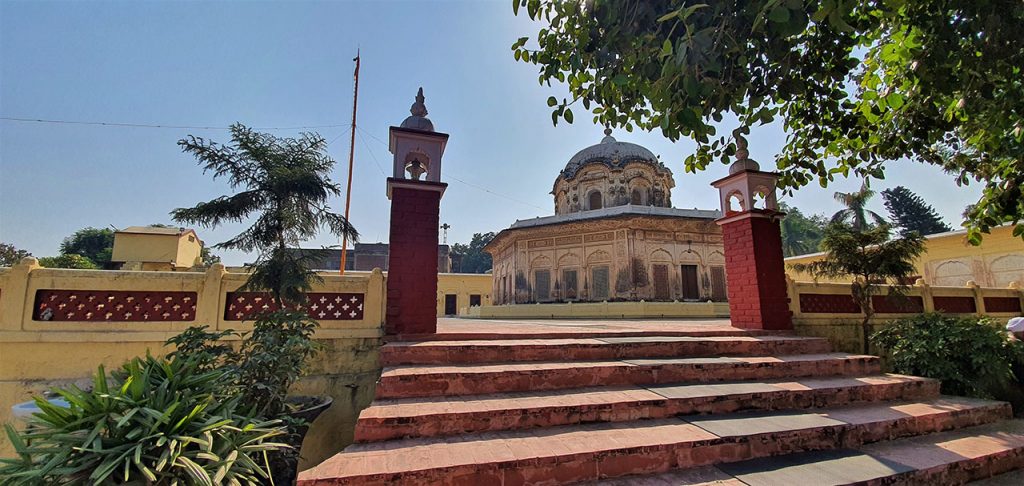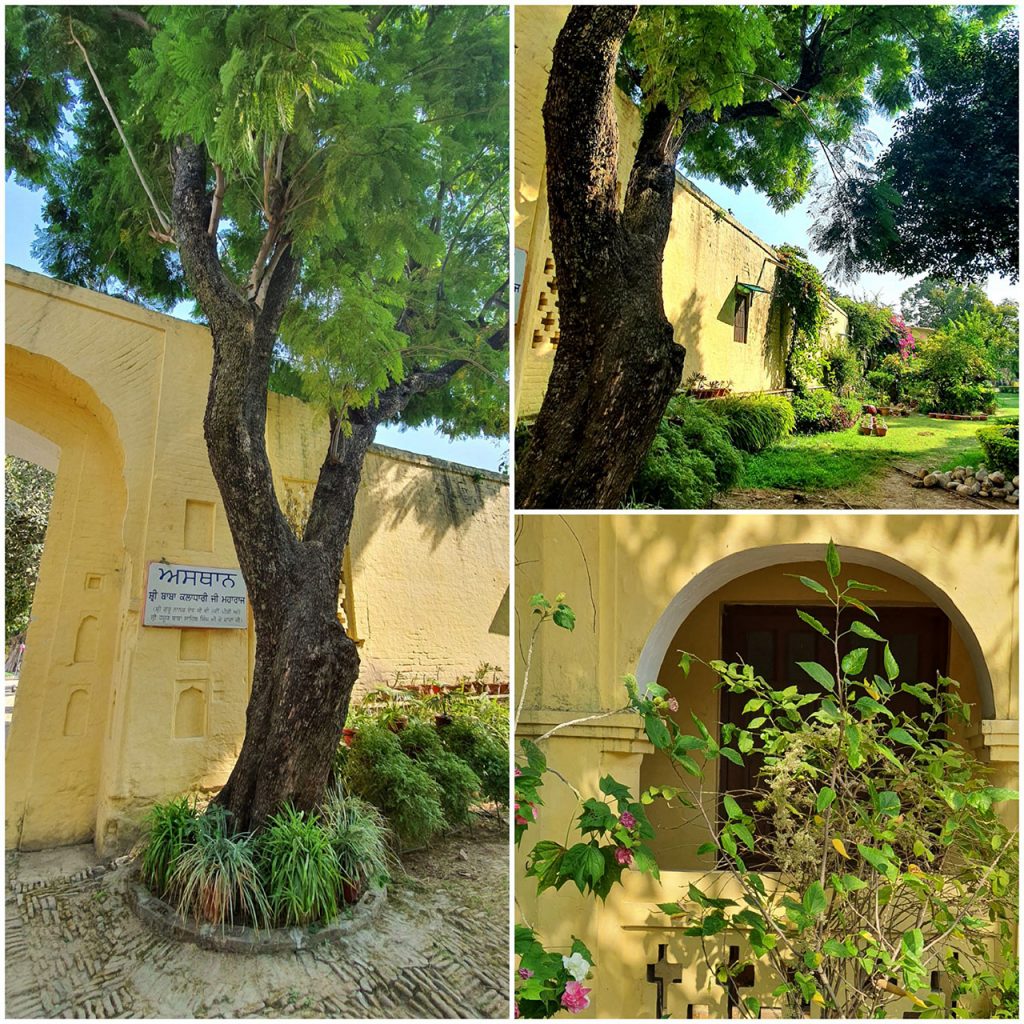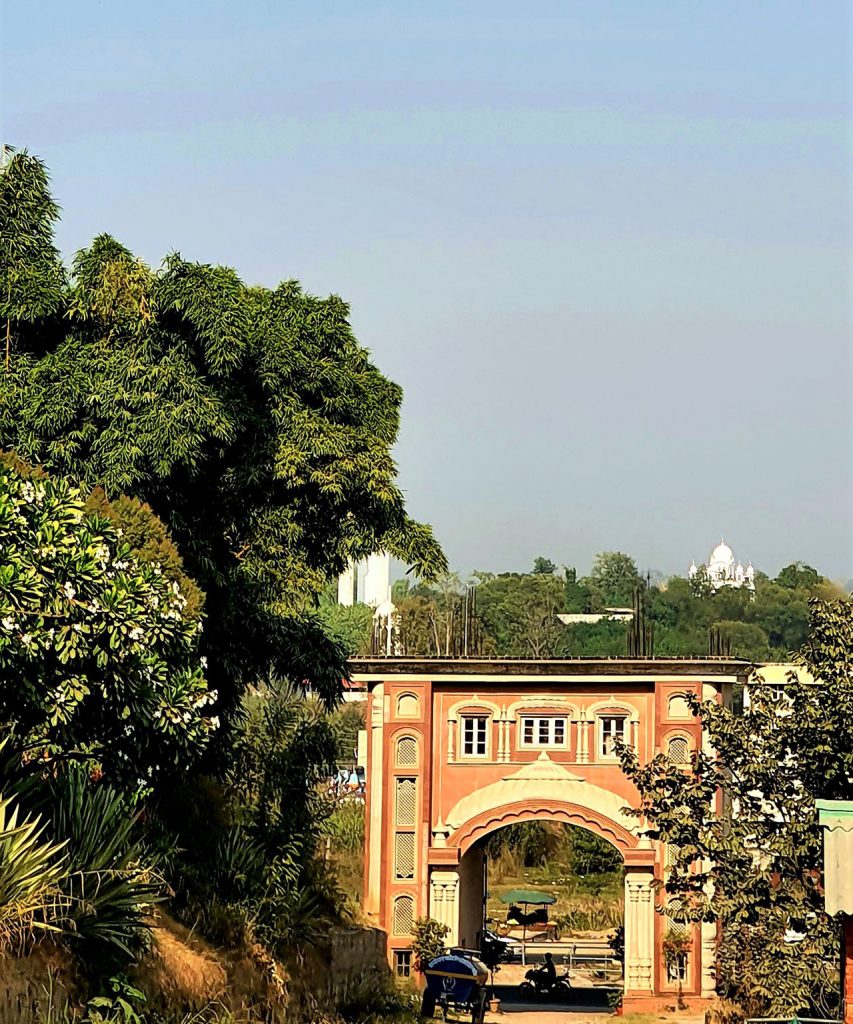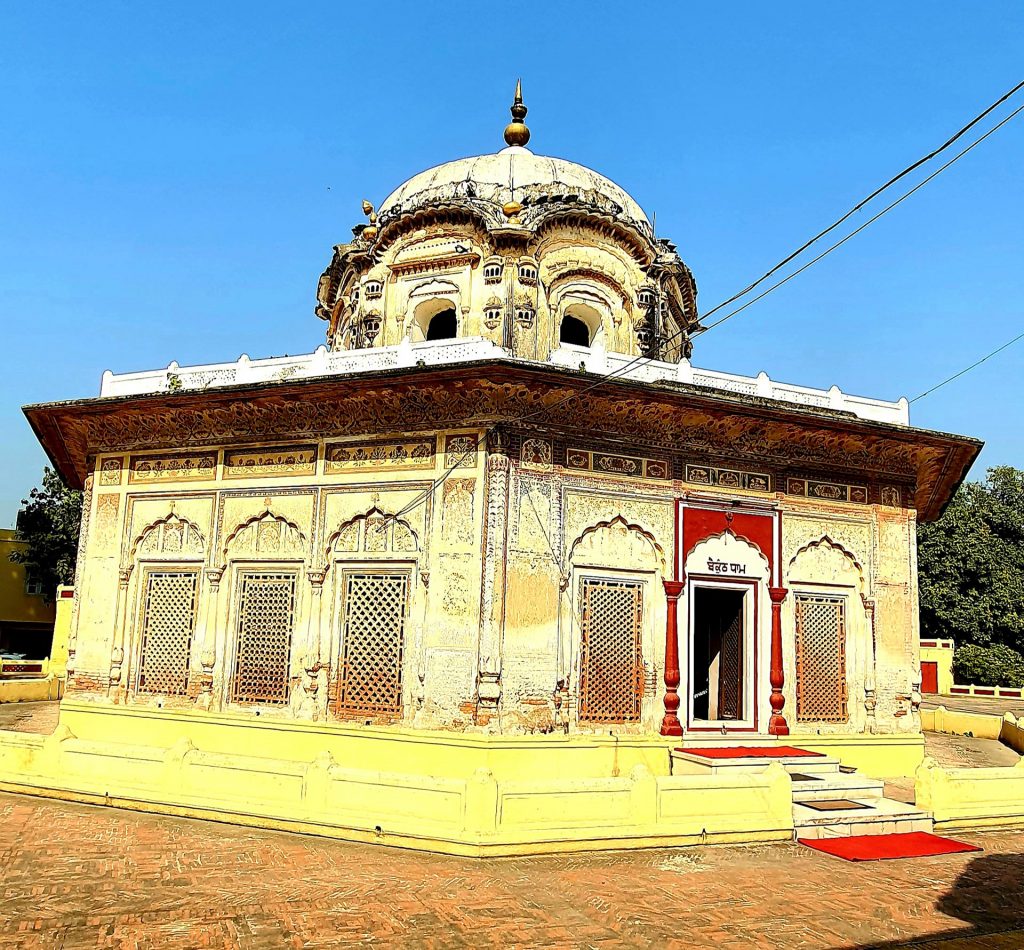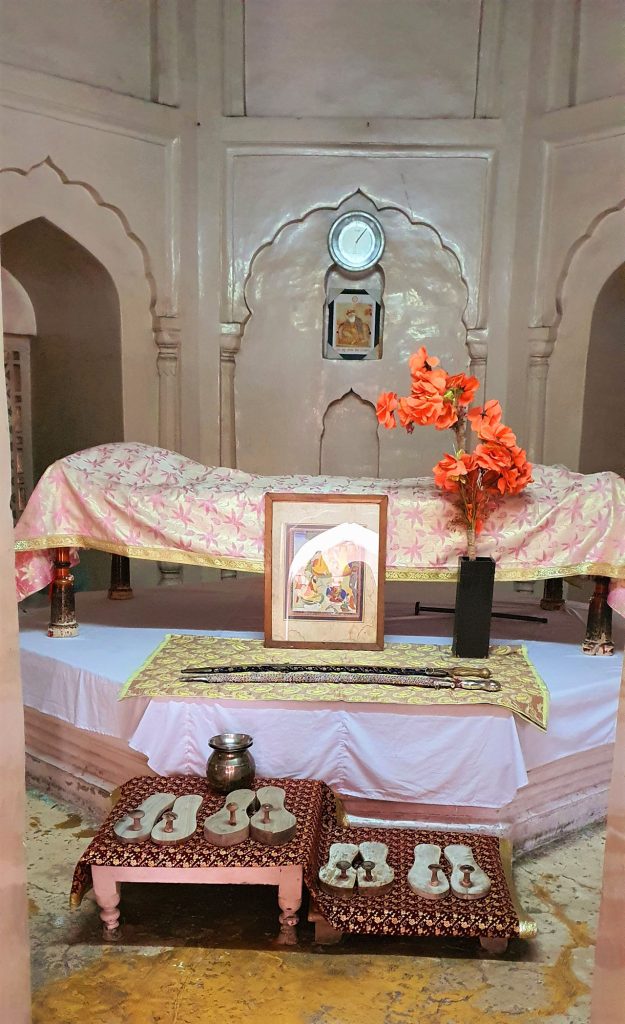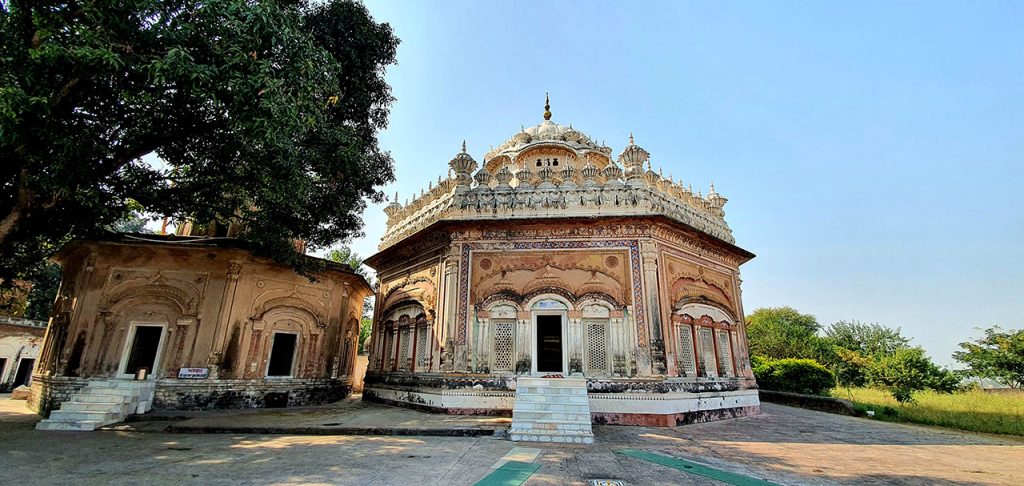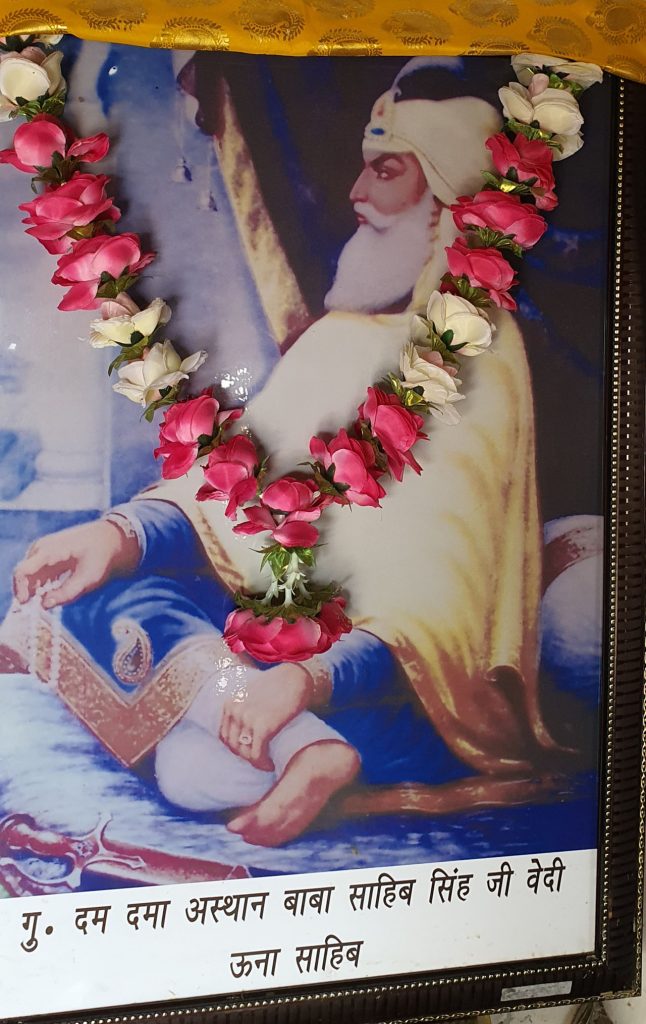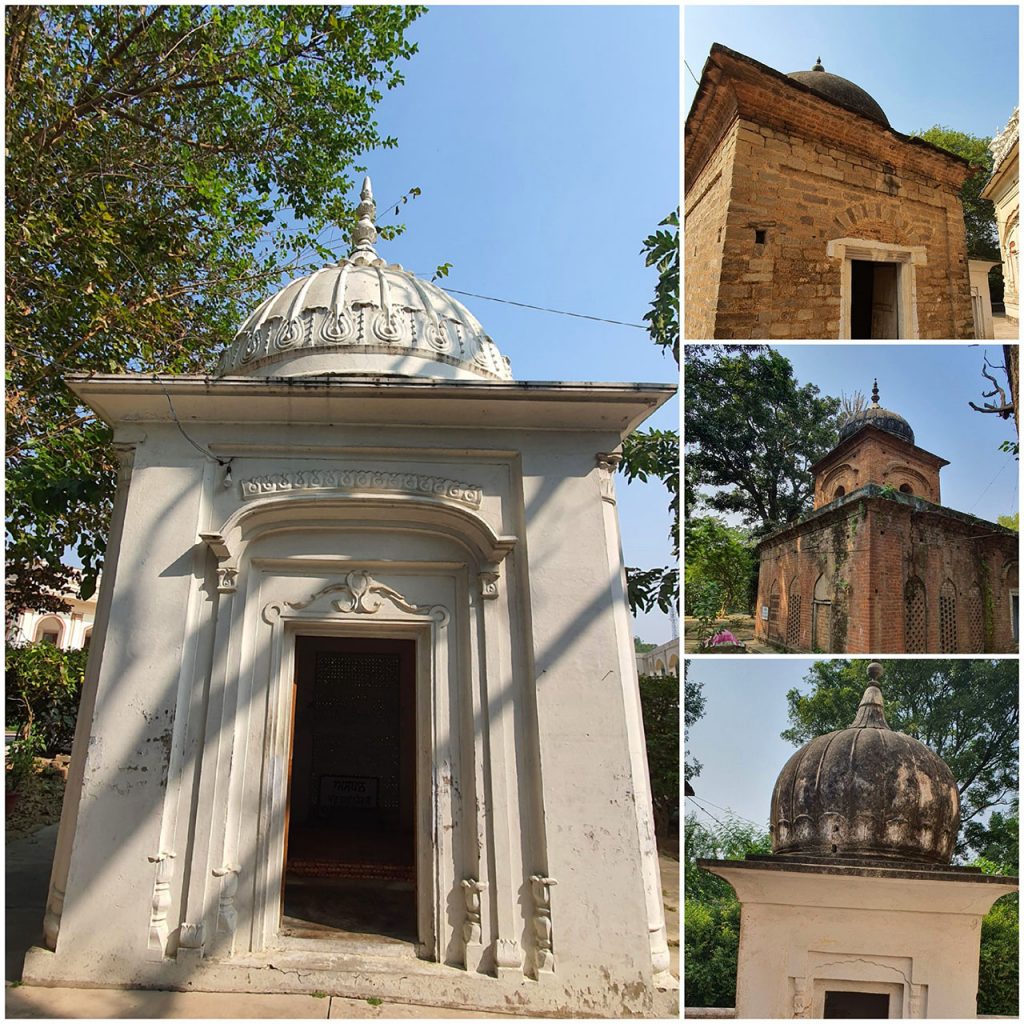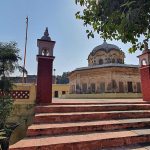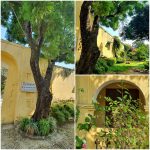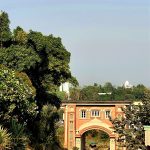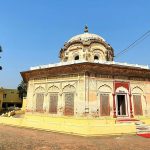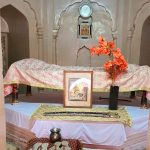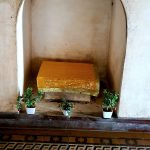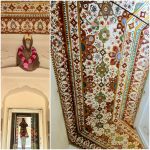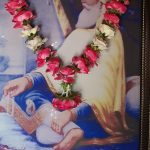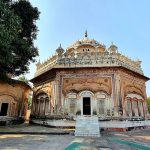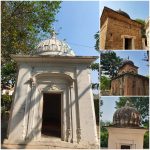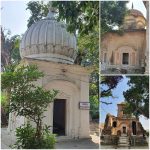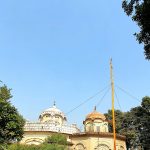Of Gurus and Gaddis- Vaisakhi Remembrance
Around the Holi and Vaisakhi one’s memories turn to the majestic kaleidoscopic Hola Mohalla and traditional Baisakhi celebrations at the historic Gurudwaras. Vaisakhi marks the commencement of solar New Year and the month of Vaishakh- a historical and religious festival! Though this year the celebrations lacks the lustre and have lost its sheen to the recurring Pandemic aggravated by Farmers agitation! However several historical structures never fail to help us connect with our roots during traditional festivals like Baisakhi.
Leaving a busy road below lined with fruit carts and haphazard traffic we climbed uphill through a beautifully carved vast stone Qila gate with jharokas and jaalis – the gateway to tranquillity and greenery! We were in the historic foothill town-Una set against a backdrop of the mighty Dauladhar range of the Himalayas, in Himachal Pradesh touching the Panjab border; to explore the exquisite architecture of the Samadh of Baba- Kaladhari ji and the heritage Sahib Singh ji Bedi Gurudwara, closeby. Una is mentioned in the ‘Ain-e-Akbari’ a historical Treatise of Akbar’s Mughal period. Ain-e-Akbariis a 16th century documented book by Akbar’s court historian Abul Fazl whose third part deals with his administration.
We drove up to the top of the hill where the Qila-fort spread around us; some remnants of the medieval-walls were discernible with the majestic mountains in the background. Today it is patronised by pilgrims and tourist with similar enthusiasm as the home of the holy Bedi family who migrated to Una from Dera Baba Nanak. Baba Kaladhari ji who came here in the year 1695, as the family owned extensive Jageers and stayed in Una till he left for the heavenly abode in 1737.He was the ninth descendant of Guru Nanak Devji, son of Baba Nihal Chand Bedi and father of Baba Ajit Singhjiwho was baptized by Guru Gobind Singh ji himself!
From the car-park we proceeded along an old-thin-brick path surrounded by splendidly lush greenery of variant shades enveloping the Qila permanent-residence towards the main gate built in Mughal architecture style- all freshly painted in attractive shade of pale yellow. We stood by to read a descriptive Board that conveyed that ‘we were on a Holy land of Gurus and this was a Memorial to Baba Kaladhariji’.These fine-looking structures around us were built with Nanak Shahibricks and old stone walls and were parts of the ancestral home of the Bedi family built by Baba Ajit-Singh ji in the 18thcentury and lived in by 10 generations of the Bedis- renovated and restored now!
Past a Langar hall and huge old Banyan tree we climbed up few stone steps flanked by brick pillars topped with stone lamp- jharokas to come upon a beautiful Mughal- style edifice, the Samadh of Baba Kaladhari ji and for several minutes we stood looking at the awe- inspiring majestic structure with a palace like central-dome and faded exquisite Mughal style paintings embellishing it. Haloed by golden-sunlight, surrounded by 2 Baradaris it stood in the centre of a medieval-time brick courtyard against a backdrop of crystal blue sky! A closer look at its exteriors revealed that the carved stone arches- Mehrabs were fitted with jaalis and pillars in its sides. We had read earlier that this and the interiors held original Fresco- artwork.
We approached the ‘Darshani- Deordi’ and entered through the red painted pillars door marked Baikunth Dham to pay obeisance at the Samadh of a great Saint who was close to Guru Gobind Singh ji and several believed him to have moved here to Una to be close to Guru Gobind Singhji at Anandpur Sahib. We recalled reading this on the big Board outside. Over multiple interactions; they were caringly committed to each other! Guru Gobind Singhji sanctified Baba Kaladhari ji by telling him that one day he would be blessed with a tejasvi (radiant & gallant) grandson who would further accomplish Guru Sahib’s tasks in the future! The prophecy came true for his grandson Baba Saheb Singhji was a dynamic personality who set up this tomb- samadh in memory of his grandfather in this Una-fort.
Paying our respects at the shrine my reverential gaze fell upon an array of religious items that adorned the Samadh area – Pahari- miniature painting, bigger painting of Babaji in the background, Bed, 4 pairs of Khadau- slippers and 2 swords. A group of women performing Keertan were adding to the ethereal experience while we walked around the spotlessly clean passage of the sanctum- sanctorum decorated with beautiful Fresco miniature-artwork, especially floral- bels urgently in need of fresh paint.
As we walked outside on the old-brick courtyard enjoying the splendid scenery, peace and cleanliness and came across a Gurudwara-room where a lady read the Guru Granth Sahib under a portrait of Baba Kaladhari ji, the ceiling resplendent with a red awning adorned with a glittering glass chandelier and a large Persian carpet below! Time machine took us back to another era when large number of devotees gathered here to listen to Discourses by Babaji!
I am extremely grateful to Baba Amarjot Singh Bedi ji- next in line for the Gaddi; for his valuable contributions to the article.
Vadey Darbaar- Sahib Singhji
From Baba Kaladhari ji’s Shrine and Gurudwara– the ninth descendant of Guru Nanak Devji, we proceeded to Damdama Baba Sahib Singhji, popularly known as Vadey Darbaar by the locals. He was Baba Kaladhari-ji’s illustrious grandson who built his grandfather’s Samadh in the Qila Bedi Sahib Hill Gurudwara complex that we had just visited!! Wedged-up in the narrow lane of a busy Una Bazaar we were directed into another narrow lane that led us to a surprising vast open area where we caught the first view of a beautiful flight of stone staircase. Totally impressed we eagerly climbed up to view the ethereal edifice of the Sahib Singh Bedi Gurudwara.
Around the arch of the main door Samadh we came across marble-plaques embedded in the walls, from the past, that were etched with names of donors and donations ranging between Rs 500 to Rs 21 which carried great value then from Rawalpindi, Montgomery– now in Pakistan to Haridwar.
Baba Sahib Singhji- a Life Glimpse
Sardar Manak Singh, a descendant of the Babaji informs that ‘Tejasavi Baba Sahib Singhji in 1801 on the day of Vasakhi performed the Raj- tilak ceremony of Rajah Ranjit Singh ji as the Maharajah: Great King, King of Kings and Emperor of the 12 Sikh Misls! ’
He added that Babaji possessed an immensely dynamic personality and was equivalent to ‘patriarch of the Sikhs’. Enlightened Guru Sahib Singhji is believed to be a person with awakened ‘Kundalini’ – the energy that removes duality and clears ones being, so life-force energy flows freely; such is the power of Kundalini meditation! Kundalini is our life-force energy that remains coiled at the base of the spine that can be awakened, spiralling upwards, activating each Chakra! At a young age he studied sacred Sikh texts and learnt Keertan.
I recalled reading that alongwith Sahib Singh ji, received training in use of Arms gathered skills of Astra-Shastra Vidya- military science of weapons and was known for his military devoutness. We were narrated an incidence that while on a Hunting trip- Shikar an awakening incidence occurred when Sahib Singhji met a Tapasvi- Devgiri ji who started to guide him and further blessed him with 9 Nidhiyan and 18 Sidhiyan! Baba Sahib Singhji was known to perform miracles too! Years after marriage to the daughter of Ram Sahaiji and a son later, Babaji went to Amritsar and became a puran Bairagiafter the ceremony of ‘Amrit –Chakna”!As a spiritual leader he travelled up-to Bilaspur district where large Dewans were held in his honour.
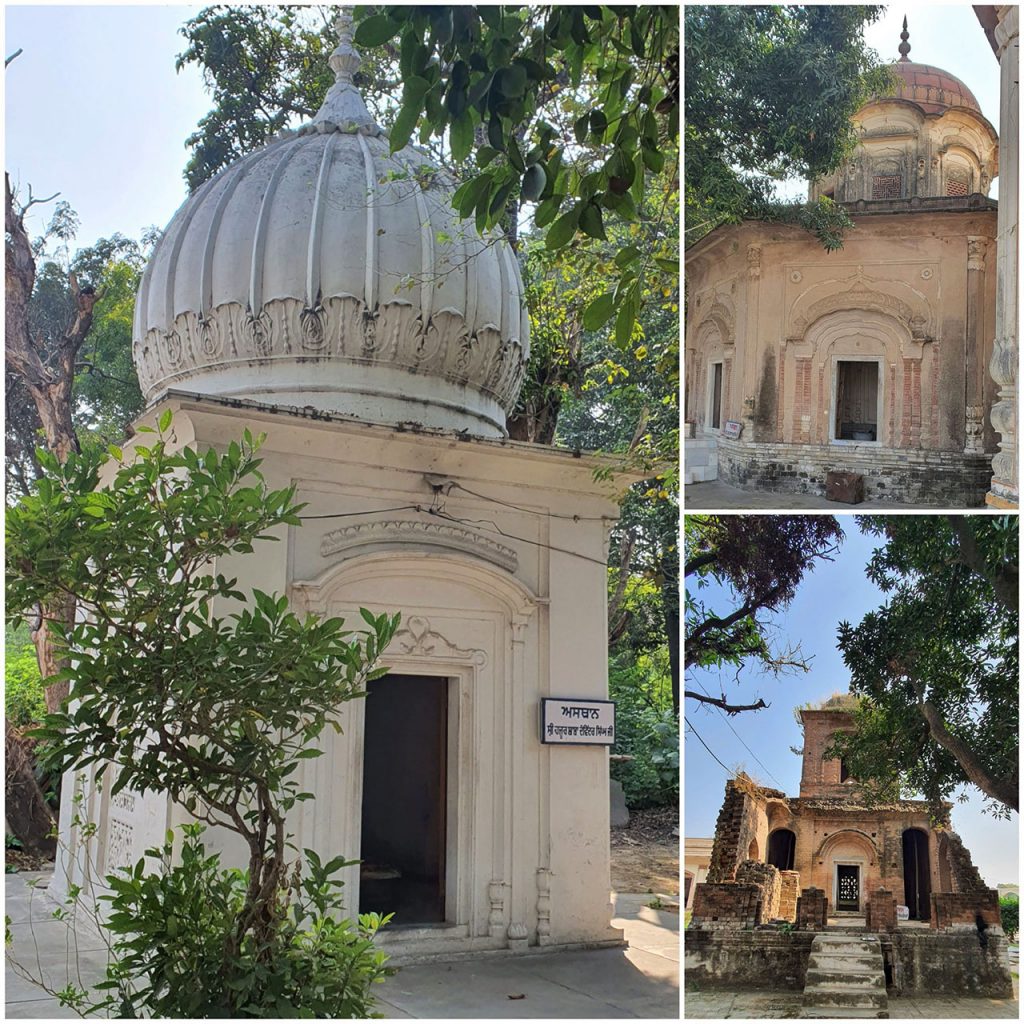
The main Samadh of Baba SahibSinghji is surrounded by more Samadhs of the spiritual Gurus-descendants of Baba Nanak
He further informed that the Samadhs of his maternal grandparents and their ancestors are behind the main Samadh. We passed several small and big Samadhs on our way – tranquil and spiritual yet with distinct architecture!! Final Resting places of Baba Nanak’s descendants seem to emanate unprecedented spiritual message ‘to see all as Equals’- the true meaning of Vaisakhi! We drove back with memories of Gurus esteemed for their devoutness!
Photo Courtesy: Sh. Arvind Chopra
- The Samadh Memorial of Baba Kaladhari ji at Qilafort, built by his grandson Baba Saheb Singhji
- The medieval Qila- residence of the Bedi family holding the Memorial to Baba Kaladhariji
- The Main gate to 18th century hilltop Spiritual centre
- The ‘Darshani- Deordi’ Entrance- marked Baikunth Dham- Samadh of Baba Kaladhariji
- The Sanctum- Baba Kaladhari ji
- Collage- Baba Sahib Singhji
- Baba Saheb Singh ji Bedi- Vadhey Darbar
- Gurudwara Damdama Asthan -Memorial to Baba Sahib Singhji
- Samadhs of spiritual gurus and descendants of Guru Nanak Devji
- The main Samadh of Baba SahibSinghji is surrounded by more Samadhs of the spiritual Gurus-descendants of Baba Nanak
- Nishan Sahib and the Samadhs

